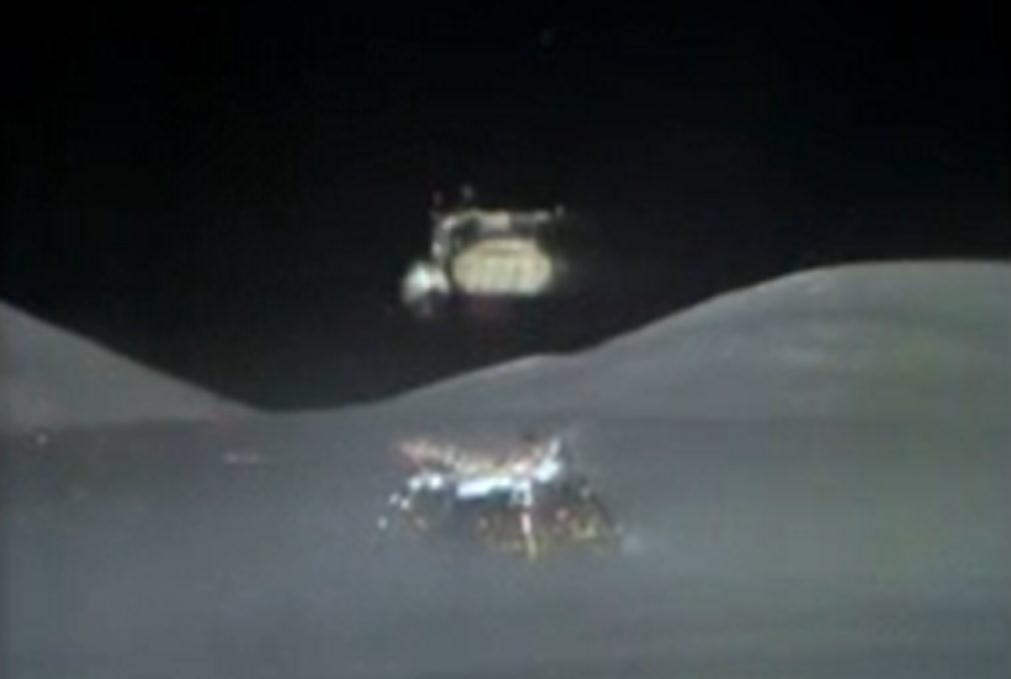When Apollo 17 lifted off from the moon, a camera captured the movements of the spacecraft — even though nobody was left behind to, say, establish a lunar base. How was that possible? With a camera on the lunar rover that could be controlled — or even programmed — from Earth.
Pretty impressive technology for the takeoff 42 years ago yesterday (Dec. 14) in 1972, although it took three tries to get the technique right.
As the Smithsonian National Air and Space Museum explains in a 2011 blog post, the camera was available on Apollos 15, 16 and 17. The television camera communicated from Earth using a high-gain antenna on the rover, but there was a slight time delay for the radio waves to travel (a couple of seconds) between the Earth and the Moon.
So the engineers suggested moving the rover a certain distance from the lunar module and setting the camera to automatically tilt to show the lunar liftoff when commanded from Earth.
That was the plan, at least. On Apollo 15, the tilt mechanism malfunctioned and the camera never moved upwards, allowing the lunar module to slip out of sight. And while the attempt on Apollo 16 gave a longer view of the lunar module rising up, the astronauts actually parked the rover too close to it, which threw off the calculations and timing of the tilt upwards so it left view just a few moments into the flight.
Ed Fendall was the person doing the controlling. In an oral history for NASA done in 2000, he recalled how complex the procedure was.
Now, the way that worked was this. Harley Weyer, who worked for me, sat down and figured what the trajectory would be and where the lunar rover would be each second as it moved out, and what your settings would go to. That picture you see was taken without looking at it [the liftoff] at all. There was no watching it and doing anything with that picture. As the crew counted down, that’s a [Apollo] 17 picture you see, as [Eugene] Cernan counted down and he knew he had to park in the right place because I was going to kill him, he didn’t — and Gene and I are good friends, he’ll tell you that — I actually sent the first command at liftoff minus three seconds. And each command was scripted, and all I was doing was looking at a clock, sending commands. I was not looking at the television. I really didn’t see it until it was over with and played back. Those were just pre-set commands that were just punched out via time. That’s the way it was followed.

